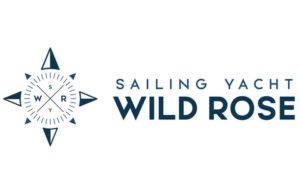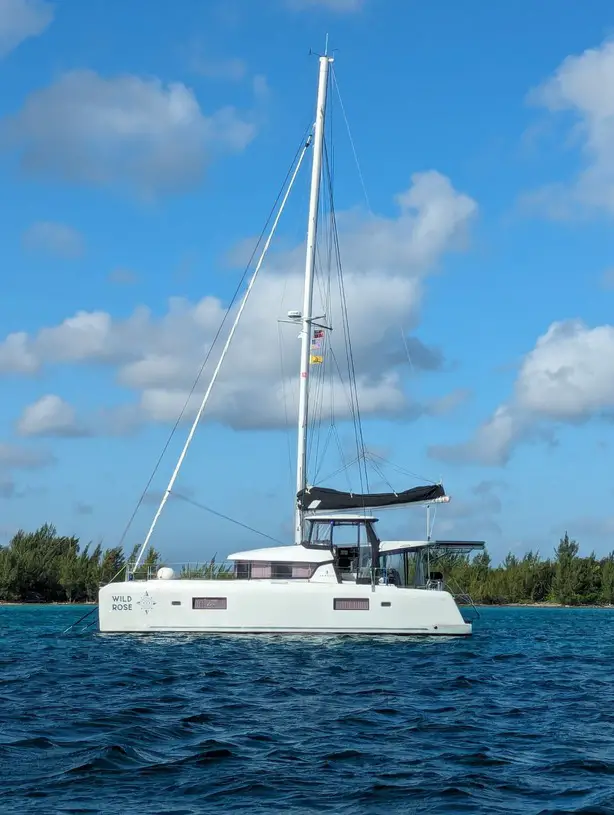We spend about 300 nights a year on anchor. Most cruising sailors we know spend little time in a marina, and mooring ball fees add up quickly. Plus moorings are incredibly unreliable because most of them are poorly maintained. So most cruising sailors spend the vast majority of our time at anchor.
Type of Anchor and Rode
Our boat came with an older generation Delta anchor. In it’s day it was a fine anchor, and for most charter boats it would be adequate. My opinion is that if you are going to spend a lot of time on anchor you want a newer generation anchor like a Mantus or Rocna. Anchor design has come a long way in the last decade. The newer generation anchors set faster and hold better in most bottom compositions. We have a 65lb Mantus M2 for our 42 foot catamaran. There are many great newer generation anchors.

Ideally you want an all chain rode, we have 240 feet of chain and another 100 foot of nylon rode after that. Chain is important, even if you don’t have an all chain rode, you want at least 30 or so feet of chain for a smaller boat, more for a bigger boat. Chain adds weight, protects from abrasion and keeps your anchor shank horizontal to the seabed. Ideally you want to not pull vertically on the anchor, you want to keep that force horizontal.
Anchorages
It’s important to pick a suitable anchorage for the expected weather conditions. Typically you are going to want to be in the lee of a landmass in an area that has suitable depth, bottom composition, wind and wave protection. Typically your charts, cruising guides and other apps like No Foreign Land and Navily will have a ton of information on anchorages. We use all of these tools plus knowledge from friends on where to anchor.
Seabed Composition
It’s ideal to know what type of seabed you are dealing with. Often the seabed is noted on the chart or cruising guide. Or you can ask someone you know who has been there.
Knowing the seabed helps with how you are going to set the anchor. I know in soft mud I need to set out more chain and go back slowly, soft sand is a lot more forgiving. In some anchorages you will have a hard bottom with pockets of sand, or seagrass with pockets of sand. Every anchorage is different.
Setting the Hook
The first thing we do is have the windlass controls available, the anchor tether removed and the anchor at the waterline ready to be deployed. I have already picked the spot and am motoring into the wind letting the wind help stop the boat as well as using reverse. Once the boat is in position and the boat is at a complete stop we drop the anchor.
This is more of an art than a science, because you want to be falling back with the wind as you are paying out anchor rode. Ideally you would be laying out the chain at the exact pace that you are falling back, but this is really impossible. Suffice it to say you want to be moving back slowly as you are paying out rode. What you really want to avoid is dropping the anchor and then laying a huge bundle of chain right on top of it.
As you are falling back you don’t want to be going back too quickly because you run the risk of not setting the anchor or jerking it out of the seabed. I once watched a skipper try to anchor at least 20 times in compacted sand. You needed to gently tug on the anchor to get it to bite into the seabed and slowly put pressure on it to get it to fully dig in. This gentleman was going full throttle in reverse and the anchor was skipping along the bottom every time.
Make a Mark
Immediately when Nancy starts to drop the anchor I set a gps mark on our chartplotter. This is helpful for setting our anchor alarm as well as having knowledge of where exactly the anchor is. It is a nice little trick that only takes one second to do.
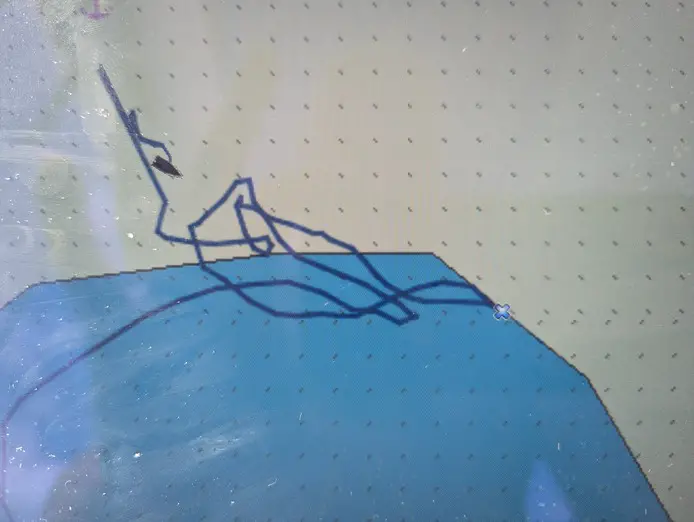
Laying Out Enough Scope
There has been exhaustive works on how much scope you want to let out. As a general rule, we let out 7:1. Meaning if it is 10 foot deep we let out 70 foot of chain. If we are very limited on space we might go down to 6 or 5 to one. If it is a storm situation we go to 10:1. The worse the holding or the more wind anticipated the more scope you need to let out. Poor holding, let out more chain. The more chain you can get on the bottom the better, chain is very heavy and it helps the anchor stay in place.
Bridle or Snubber
On a catamaran the primary reason you need a bridle is to keep the anchor rode, whether it is chain or nylon, in the center of the boat so you don’t swing wildly at anchor.
The secondary reasons are the same for catamarans and monohulls. Although on a monohull you can get away with a simple nylon snubber. You don’t want your chain directly attached to the windlass. This is bad for the windlass as it can put unnecessary load on the windlass. The other reason you want a nylon bridle or snubber is that nylon stretches, especially wet nylon. You want this stretch to absorb the shock loads from wind gusts. It provides shock absorption to keep the anchor from jerking out of the seabed.
Testing the Set
Our procedure after we get the anchor and bridle set is we pull back on the anchor. This is going to vary depending on your engines and propellers, but you want to put some tension on the anchor to dig it in and more importantly make sure you have good holding. We go to about 2000 rpm’s in reverse on our setup the majority of the time. Do not assume your setup is the same, a friend of ours has much more torque on his propellers in reverse and he reverses at a much lower rpm.
There have been anchorages where we just couldn’t get a good set. In that case you have to decide what you are going to do. In Bequia this season we just couldn’t get our anchor to hold, so we went to the back of the anchorage and set out a lot of chain. We were fine.
Spatial Awareness in a Crowded Anchorage
The reality is most anchorages you go to are going to be pretty crowded, especially in the tropics during high season. I am currently sitting in an anchorage on the south side of Grenada during the summer, which is hurricane season here, and these anchorages are packed to the gills. So you need to either anchor at the back of the pack or get good at fitting your boat into crowded anchorages while being respectful and safe as well.
I cannot count how many times someone has dropped anchor right next to us and remained uncomfortably, or even dangerously close. My rule of thumb is I like at least 150 feet between boats. Catamarans and monohulls swing a little differently sometimes and there are sometimes currents in anchorages that affect how you swing. Don’t be afraid to try to fit into a spot and if you find after your anchored that you are too close to another boat, pick up and go somewhere else. We have done this many times.
There are many times after a long passage or coming in to a harbor at night (which we try not to do) where we just pick a spot at the back of the pack away from everyone else.
Consider a Laser Rangefinder
I had a laser rangefinder for bow hunting that I stowed aboard before we set sail. It comes in handy when trying to judge distances to other boats in an anchorage. Many golfers have them as well. I like to keep at least 150 feet from other boats, although this isn’t always possible.
Swinging Room
What we try to do is pull up into the wind behind two boats and position our boat equidistant between the stern of the two boats. That is where we drop the anchor. It ensures that we will be downwind of them, then we just have to worry about the boat behind us and to the sides. Once we get set up I pull out the range finder and see how far we are from the other boats. The vast majority of the time all of the boats swing together. So once you are set with your bridle or snubber on and you have appropriate distance to the other boats, you should be fine.
Set Your Anchor Alarm
We use an anchor alarm that we set after we are fully anchored and the bridal is deployed. We use Anchor Pro, but there are a lot of good ones out there for both Android and Apple phones. Apparently Aquamaps has a really good one, but I have not used it. Part of the reason we drop a gps mark when we drop the anchor is so when we set our anchor alarm it helps us more accurately position the anchor on the Anchor Pro app. Otherwise you are just making an estimated guess.
Another trick we use along the way is to start a track in Navionics, it will show you how you have been swinging. And, you will be able to tell if you have been dragging or if the wind as switched.
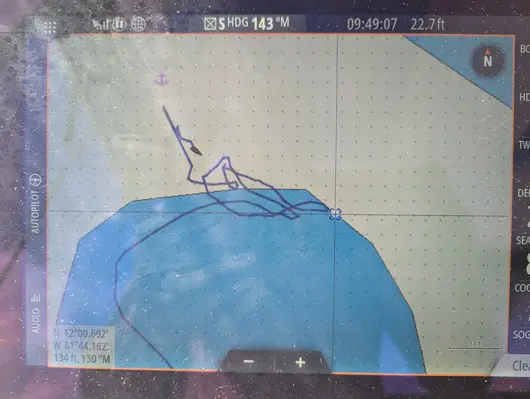
What to do When You Drag
It is inevitable, no matter how good you get at anchoring, or how great your anchor is, you are going to drag. It might only be a few feet, or it could be hundreds of feet very fast. Sometimes it will happen when the wind switches 180 degrees, your anchor will pop out of the seabed and you can drag.
The first thing you need to do is get your engine(s) started. Get the drive in gear and at least take the pressure off the anchor. Do not try to motor forward until you are prepared to pull the anchor up, you don’t want to get the rode wrapped around your keel or worse.
If it is night, you need to make sure you are looking at anchor lights of other boats, make sure you don’t turn on any lights inside of your boat, you need to keep your night vision. Get your instruments turned on and any communication devices you need. Turn on the VHF. Once you are in position to raise the anchor go ahead and do so. We have only dragged once at night during a squall, and the anchorage was empty, so we just reset and put out a ton of chain. If you are in an open area with no one behind you it might be better to just let out 50 or 100 more feet of chain and reassess once the sun comes up.
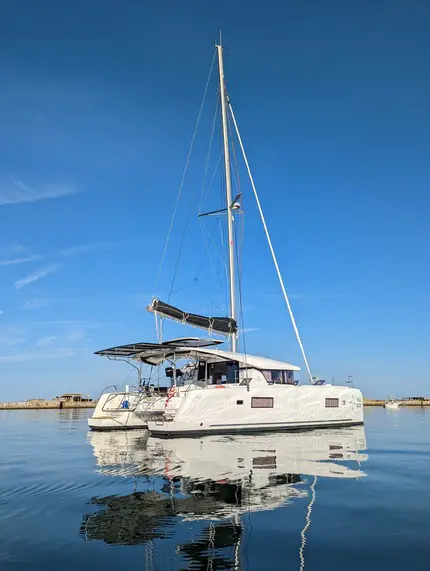
Be Patient
Anchoring is an art that takes time to learn. Go slow and make sure to keep your boat safe. There’s no need to put yourself or your boat at risk by anchoring on a lee shore with short scope. When in doubt go to a different anchorage or further out where you are safe. I always pick safety over a good spot.
Ship Log
Sign up below to be added to our email list for the Ship Log. We only post usually once a month.
